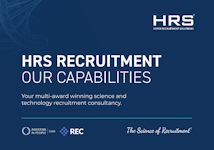1. Commissioning
This part of the CQV process ensures that any facilities and equipment used in the manufacturing process are designed and installed as intended. This is to ensure the safety of the product, and the safety of those that use the equipment in manufacturing.
The commissioning stage of the CQV process involves a lot of documentation and testing. If you are a CQV engineer, then your main responsibilities (in this part of the CQV process) will be to:
- Document any issues encountered with the equipment and how to resolve the issue
- Execute the desired regulation protocols for the specified equipment
- Protect the equipment before placing it into its desired service
2. Qualification
The next step will be to qualify the equipment for safe use. There are three qualification steps that must be followed in this part of the CQV process.
Step 1: Installation Qualification (IQ)
This step of the process ensures that the equipment is installed correctly. It essentially re-traces what went on in the first stage (commissioning) and ensures that all the documentation is in order.
Step 2: Operational Qualification (OQ)
Operational qualification involves checking that the equipment operates as it's intended to do. For instance, this could involve checking that the equipment can run for a specified duration without affecting anything else around it, or without malfunctioning.
Step 3: Performance Qualification (PQ)
This is to ensure that the equipment can run efficiently and consistently in the conditions it will be performing in.
3. Validation
The validation step of the CQV process involves multiple reviews. It is an ongoing part of the CQV process which is used to ensure sustainable safety surrounding the equipment.
This step can involve the monitoring of data , as this will help a CQV engineer evaluate the efficiency of the equipment. They could also do this through sampling the equipment and the product it produces, to make sure that each product meets its required specifications.
Validation is arguably the most integral part of the CQV process, as the documentation produced from this step can help you avoid compliance issues if your product is ever deemed as faulty.
Why Work in CQV?
CQV is a very exciting sector of the life sciences. As a CQV engineer, you will be able to upskill your expertise and increase your earning potential. On average, CQV engineers earn an average of £37,852 in the UK.
If you choose to become a CQV engineer, your role will have a wide variation of tasks, allowing you to work with a range of technologies and products. The plus side is, it's a very interesting sector to start your career in! It's extremely specialist, and very niche, meaning you will become a subject matter expert in no time.
